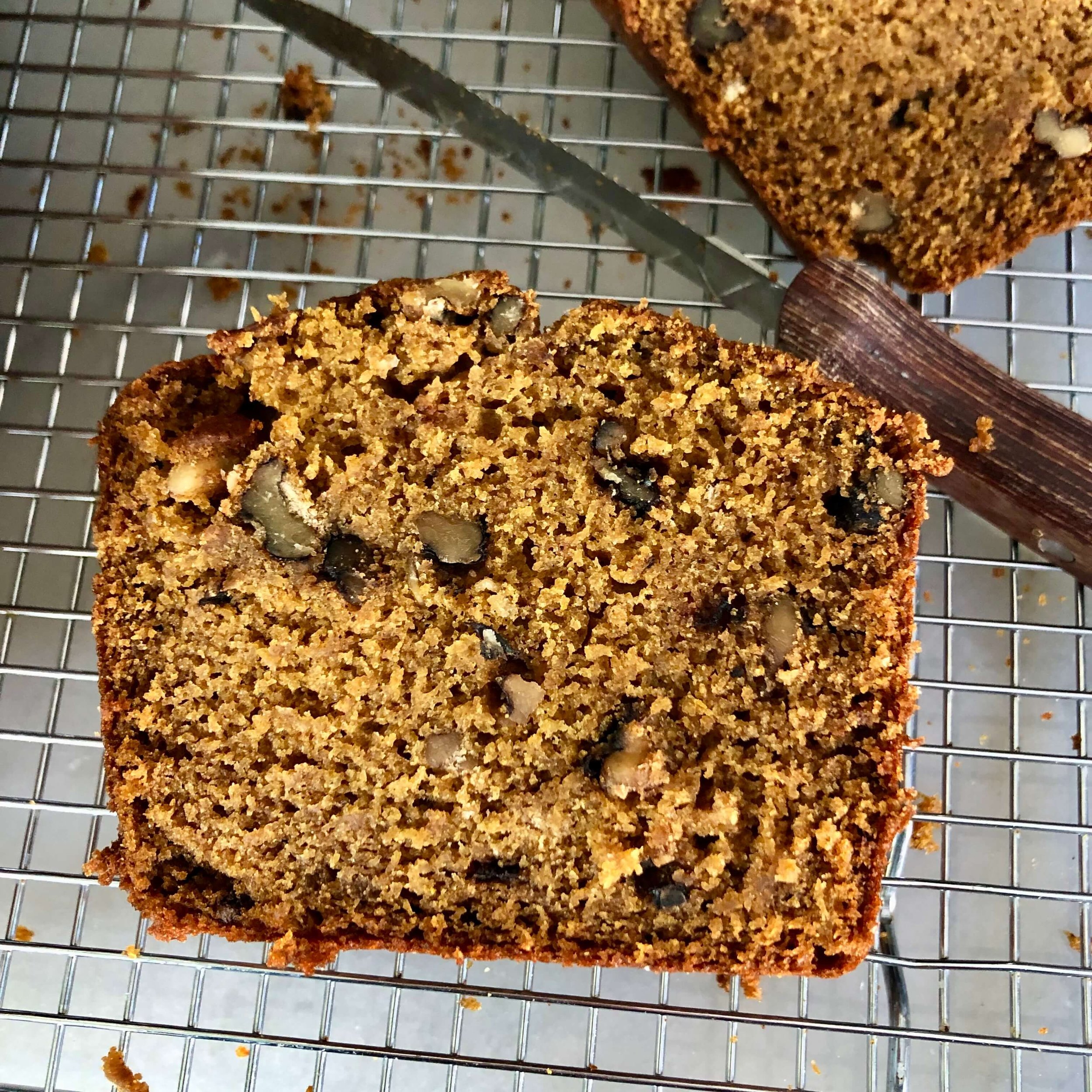Ayurveda: Fall is Vata Season
Fall into Winter is Vata Dosha - use Ayurveda to create balance in your life this holiday season.
Ayurveda: The Science of Life
Ayurveda is an ancient healing system from India.
Ayurveda means "science of life" in Sanskrit. It is a holistic, individualized practice that uses diet, herbs, yoga postures, pranayama, and meditation to maintain health and prevent disease. Yoga and Ayurveda are sister sciences, rooted in the Vedic tradition.
In Ayurveda, everything in the universe is composed of five elements:
Vayu (air)
Jala (water)
Aakash (ether)
Prithvi (earth)
Teja (fire).
These five elements form the three basic elements/doshas of all the energy and matter in the universe, including the human body and Mind in varying combinations.
The three Doshas:
Vata (ether/air)
Pitta (fire/water)
Kapha (earth/water)
Agni (fire):
In Ayurveda, agni is considered to be the driving force within every body system. It is perceived as the key to overall health. Agni determines which substances enter our cells and tissues, and which are removed as waste. Impaired agni is considered the root of all imbalances and disease.
Ama (unripe, uncooked):
Ama is the opposite of Agni. It is a toxic or disease-causing substance that weakens. In Ayurveda, Ama is believed to be at the root of all diseases. Ama is considered to be naturally present in small amounts in the digestive tract. It is part of the process of digestion and problematic only when it spreads.
Our individual constitutions:
When I had breast cancer, I did not look at it from an Ayurvedic perspective with respect to Agni and Ama. I did consider my doshas with respect to diet, activities I did, and balancing my body and nervous system.
Each of us has more or less of each of the three doshas. One tends to be dominant. Rarely, someone will be balanced in all three. I'm strongly Vata, much Pitta, with a little bit of Kapha. These do not change, they are like genetics, our innate constitution.
Like anything, there are positive and negative qualities to each dosha. When we are out of balance, Ayurveda provides ways to get back in balance.
Characteristics of Vata, Pitta, and Kapha
Vata Characteristics
Energetic, kind-hearted, and creative.
Naturally slim, flexible, with lean bones.
Thinks outside the box but can become easily distracted.
Mood is highly affected by weather, people around them, and foods they eat.
Learns quickly, great multitasker, regularly “on the go".
Forgetful, anxious, fluctuating moods, can get easily overwhelmed.
Light sleeper.
Irregular appetite and eating patterns, prone to digestive issues.
Highly sensitive to the cold.
Poor circulation with cold hands and feet.
A vata-dominant person benefits from a regular daily routine, staying warm, meditation, and calming activities to manage stress.
Pitta
Tenacious personality.
Strong leaders, highly motivated, goal-oriented, and competitive.
Muscular build, athletic, strong, quick metabolism.
Learns quickly, self-determined, easily masters skills, strong desire for success.
Good circulation, healthy skin and hair.
Impatient, prone to conflict, often hungry, mood swings when hungry.
Prone to acne and inflammation.
Sensitive to hot temperatures.
A pitta-dominant person benefits from focus on work-life balance and avoiding extreme heat (weather, spicy food, temper, etc.).
Kapha ("kuffa")
Steady, stable. and caring.
Thicker bones, strong bones and joints, healthy immune systems.
Tend to be support system for others.
Rarely get upset, measured before acting.
Slow and deliberate, empathetic, caring, trusting, patient.
Calm, wise, happy, and romantic.
Slower metabolism, prone to weight gain.
Prone to sluggishness, over-sleeping, breathing issues (i.e., asthma, allergies).
Mucus buildup, susceptible to depression, needs regular motivation and encouragement
A kapha-dominant person benefits from regular exercise, a healthy diet, keeping warm, and maintaining a regular sleep routine.
Ayurveda is a system of energy management. It is believed all disease begins in the mind and digestive system. Opposites cure.
Even the seasons have doshas:
Fall/Mid-Winter is Vata
Late-Winter/Spring is Kapha
Late-Spring/Summer/Beginning of Fall is Pitta
We currently are in Vata. During this time it is helpful to implement changes to counteract Vata imbalance. I will explain more about Vata, Pitta, and Kapha in separate blogs, but below are 10 things you can do to stay in balance this season.
How To Determine Your Dosha
There are many online tests you can take to figure out your constitution/dosha. I like the test at Banyon Botanicals. You will be put on a mailing list of course. You always can cancel, but that's a list I like. I'm not associated with them in any way.
I'm skeptical about giving my personal health information to random websites, but I did to Banyon Botanicals because it’s a reputable company, and I know people who like it. I try to keep some of my online personal information private by changing my birthday and/or the year, depending on the service. There's so much information saved about us from our Google searches, what we read, where we shop, so who knows if that helps. This test matched previous Dosha tests I’ve taken.
Keep in mind herbs and supplements are unregulated. They can be mislabeled, claims may be misleading, and there can be heavy metals in them. It looks like Banyon Botanicals does third party testing during many steps of production. They seem like a legit place to get things of this nature. Do your own research if you're inclined to make a purchase. I don't take herbs. I do take a few doctor recommended supplements for basic health and migraines. The article linked above made me thoroughly research their sources.
Qualities or Attributes of Vata Dosha
Dry
Light
Clear
Cold
Rough
Subtle (not gross)
Mobile
10 Ways to Calm Vata Dosha this Fall/Winter
Food/Drink (1)
If you tolerate dairy, incorporate products like yogurt, kefir, soft cheeses, warm whole milk, and sour cream into your diet; use oils and fats like ghee, olive oil, sesame oil, avocado.
Use sweeteners like honey (in moderation), real maple syrup, stevia (in moderation), dates or rice syrup, and avoid refined sugars.
Drink room temperature water with lemon or lime, chai tea, vanilla tea, tulsi tea. If you drink alcohol, sweet whites or reds are best, no bubbles (astringent), and not to excess.
Eat veggies/fruits like butternut squash, pumpkin, sweet potatoes, spinach (wilted), cooked carrots, carmelized onions, creamed corn, zucchini, mangoes, ripe bananas, grapefruit, orange, Meyer lemons, guava, peaches
Most nut butters are good for vata, nut "milks,", soaked or salted nuts, sesame seeds (when salted and warmed), sunflower seeds
Use grains like rice, quinoa, whole wheat, oats
Avoid or consume in moderation the following: dry, light, astringent, and bitter veggies and fruits (cucumbers, potatoes, peas, green beans, cauliflower, broccoli, dark leafy greens, radishes, onions, garlic, raw veggies, plantains, cranberries, pomegranates, apples, raspberries); coffee, black tea, kombucha, rosewater, gin, vodka, most liquors, beer, dandelion and nettle teas; refined sugar; sesame seeds, mustard seeds, black beans, chickpeas, black-eyed peas; cold milk and hard cheeses; corn, popcorn, millet, yeast breads, buckwheat, rye, puffed cereals
If you're primarily another dosha, consider this time of year may be motivating for you and some Vata dietary "avoids" may be good for you.
In general, from a dietary perspective, many of the fruits/veggies on the "avoid" list are nutritious! In Ayurveda, opposites balance things out. If you're trying to balance Vata and plan to eat broccoli (a staple of this Vata woman's diet), balance out its drying qualities by steaming it and adding ghee (I use butter), salt, and lemon. I generally start my day with a coffee or Assam black tea. Would I be better served by other things? Probably. I like it. I add whole warm milk to balance it out, and the coffee/tea I buy isn't terribly astringent. I am motivated to do these things because I actually feel better.
Remember: this is is a general primer for Vata imbalance, not a plan. :)
Yoga (2-4)
Revolved Abdominal Pose Variation (Jithara Parivartanasana) - Lie on your back. Stretch your arms out to the side like a "T", drawing your shoulder blades down your back. Bend your knees placing your feet on the ground. Separate your feet wider than your hips. Press your feet down and move your pelvis a few inches to the left. Drop your knees to the right, rolling onto the edges of your feet.. Stay for 5-10 breaths. Bring the knees up, feet to the floor. Bring your hips back to center. Move your pelvis a few inches to the right, drop your knees over to the left. Again, stay 5-10 breaths. Bring the legs back up. Shift back to center. Extend your legs along your mat, take three breaths.
Legs Up the Wall Pose (Viparita Karani) - Place a bolster parallel to the wall, approximately six inches away from the wall. Sit sideways on its edge, and swing your legs up the wall as you lower your upper back, shoulders, and arms to the ground. Adjust your pelvis so it's neutral on the bolster, with the tailbone draping over the back of the bolster. Move a bit away from the wall if you are tucking under. For deeper relaxation, use a strap around your upper thighs to hold them together. Or place a sandbag on the feet. Easy breathing. Stay five minutes or longer. Set a timer with a very gentle alarm to ease you out of the pose.
Savasana (Corpse Pose) - Lie on the ground on your mat, a blanket, or carpet. Make sure you are warm. Cover yourself with a blanket. Inhale to a count of 6, exhale to a count of eight. Imagine your inhales smoothly moving from the front of your body to the back of your body, and the exhales smoothly moving from the back of the body to the front. Stay for 5-15 minutes.
Pranayama (5-6)
Mental Alternate Nostril Breathing (Nadi Shodhana) - Do this pranayama in a seated position. Breathing easily in and out the nose, Imagine your breath entering the left nostril as you inhale, then imagine it leaving via the right nostril. Then imagine the inhalation coming in the right nostril, and out the left. This is one cycle. Inhale the breath in the left nostril up to your third eye, exhale from the third eye out the right nostril. Inhale through the right nostril up to the third eye, exhale from the third eye out the left nostril. Do three more rounds, for a total of 5 breaths. Tune into your breath, watching the airflow follow the pathways you are imagining.
Victorious Breath Variation (Ujayi Pranayama Variation) - Do this pranayama seated, lying on your back with a blanket rolled under your knees, or on your back with knees bent and feet on the floor. Breathe easily in and out the nose. Inhale to a count of four, exhale to a count of six. Or inhale to a count of six, exhale to count of eight. If you feel comfortable adding a pause to the breath and the top of the inhale and bottom of the exhale, do so. No gripping or holding. Set a timer that has a gentle chime to bring you out of your meditation. 8-12 breaths.
Mantra Meditation (7)
Mantra - Choose a mantra that resonates with you. Here are some suggestions: Om Shanti Om, So’/inhale Ham/exhale, I am calm, Peace, Om, or Yogash Chitta Vritti Nirodhah. You can use a prayer, and it can be in any language you like. Sit comfortably, perhaps on a folded blanket or two, or cushion. Support your legs with blocks or a rolled blanket. Place your hands on your thighs, arms at your sides, spine long. Close your eyes and soften your facial muscles. Breathe evenly in and out for 5-20 minutes, repeating your mantra. Bring your mind back to your breath and mantra if it wanders, no judgment. Set a timer that has a gentle chime to bring you out of your meditation.
Lifestyle (8-10)
Warm bath - add a couple tablespoons of heavy oil in the water: sesame, almond, or avocado. Be careful getting out! And wipe out the tub after because it gets slippery. But your skin feels amazing afterward.
Essential Oil - add a drop or two of rose, sandalwood, or lavender to your bath or use in a diffuser.
Weighted Blanket - Use a weighted blanket when you sleep or relax.
Like yoga, Ayurveda is a tool. If it interests you, explore, take small steps, observe how you feel, and adjust. Like anything, you can worry too much about doing it right or wrong (vata), try to control it and be perfect at it (pitta), or find it exhausting to exert any energy toward it (kapha). Usually, the middle is optimal.
About The Author
Gwen Yeager is an LA-based yoga expert who loves helping people deepen their practice in practical ways that work with real-life (she’s also a cancer survivor and mother of twins). She provides her students with resources to incorporate healthy movement, breathwork, and mindfulness into every nook and cranny of living. While her teaching style is down-to-earth and approachable — she’s a stickler about the science movement and proper anatomical alignment because nothing is more important than long-term mobility and a vibrant quality of life!





